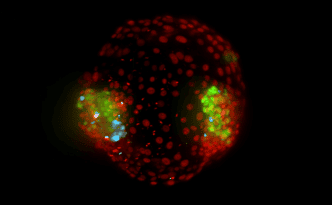
Researchers succeded in growing an embryo structure of human identical twins purely from stem cells. Thanks to this culture, scientists at the biomedical MERLN Institute of Maastricht University and the Maastricht University Medical Center are seeing for the first time how twins are formed.
The embryo is split in two due to an accelerated expansion of the blastocyst—a sort of bag containing stem cells from which new life arises. The new scientific milestone results from a technological platform unraveling increasingly complex biological secrets for several years, enabling the controlled growth of cells, tissues, organs, and embryos.
The aim is to use this research to make improved biomedical care accessible and affordable on a large scale. The current research initially focuses on the healthy implantation and development of embryos. Synthetic embryos allow for the study of the first crucial micro processes, which previously remained hidden in the womb.
Medical applications
The synthetic embryo grown from stem cells appears to be sufficiently true to reality that it can provide valuable information about biological embryos. The current research focuses on practical applications: it increases understanding of miscarriages and infertility and can help solve fertility problems or improve contraception. Three-quarters of all identical twins share the same placenta during pregnancy. Until now, it has not been clear how this natural phenomenon came about, but this discovery has helped to solve the mystery.
In addition, pregnancies with twins are more often accompanied by complications that arise during early implantation. Furthermore, the technology enables scientists to zoom in on the origin, prevention, diagnosis and treatment of many human diseases.
“‘Through robotization and machine learning, we are simulating biological processes with increasing accuracy, and with the high-throughput method, we increase our chances in this case of creating a rare twin embryo,”’ says the founder of MERLN, Professor Clemens van Blitterswijk. “And using the ‘identified formulas,’ we can also create tissue-specific stem cells, tissues, and parts of organs to treat patients. The idea is that in the future, this will be possible on a scale that will help many people while keeping costs low.”

